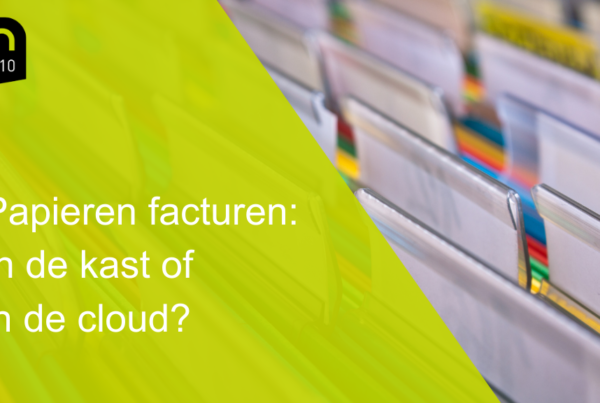In one of our previous blogs, we discussed the topic “What is the difference between digital and electronic invoice processing?“. Three types of invoices were discussed: the paper, the digital (PDF) and the electronic invoice (XML). In order to process invoices digitally, OCR (text / invoice recognition) is applied to both paper and digital invoices. A frequently heard term, but what is OCR actually?
OCR (Optical Character Recognition), also known as text recognition, is a technique to read numbers and letter series of a document. Recognizing the number and letter series of a document is not very valuable in itself. The recognized sequences only becomes valuable at the moment they are interpreted correctly. This translates recognized sequences into relevant values, which are then used for the processing of a document in an organization. An example is the recognition of a creditor of an invoice on the basis of the bank account number. In this blog we restrict ourselves only to the application of OCR on invoices, also known as invoice recognition.
Invoice recognition can be applied in two ways; Template or FreeForm. Most solutions for digitizing your purchase invoices offer one of these two options. Both variants have pros and cons, but to begin with; What do both terms actually mean and what are the differences between the two variants?
Template
The first variant we discuss in this blog is template invoice recognition. A template is a template in which the layout and layout of incoming invoices (per supplier) is recorded. By setting up a template, it is determined in advance where the different data of an invoice can be read.
However, working with template invoice recognition has three drawbacks:
- A template is no guarantee of correct recognition. A template only indicates where a value can be found. However, it is not yet a guarantee that the value is also well recognized.
- Every supplier requires a different template. Creating templates during the implementation of a system is very time-consuming. Learning to make these templates as well.
- Templates are maintenance-sensitive. You are never completely finished creating templates, because the creditor file sometimes changes and the layout of invoices can also change over the years.
Templates can be very valuable if you do not have a lot suppliers who send a lot of invoices. This way you have a high degree of recognition with a limited effort to set up the templates. As you have read above, however, templates also have disadvantages. This brings us to the other different variant, freeform invoice recognition, where some of these disadvantages are overcome.
Freeform
Freeform invoice recognition is a form of recognition where you do not have to create templates before you start scanning invoices. This means that you can immediately start scanning invoices and the data on an invoice can be immediately recognized.
For the use of freeform recognition, the quality and completeness of your master data in the financial administration is of great importance. If the master data, such as VAT and bank account numbers, are up-to-date, creditors are immediately recognized in the correct manner. If the correct creditor is recognized, you will also immediately see the correct booking proposal based on the master data in your financial administration.
Optimization of freeform recognition is in many cases possible in the form of training. With the help of training, a specific location on an invoice is recorded for recognizing an individual value of an invoice. An improvement can also be achieved through training in the number of recognized values of an invoice. Freeform and template recognition are both partially dependent on third parties, such as: the quality of the underlying OCR technique, the contrast between text and background on the invoice and finally the scan quality (at least 300 DPI).
Conclusion
Where previously invoices were entered manually in the financial administration, time and money can now be saved by automating this process. With the aid of invoice recognition, relevant data is automatically read from the invoices. Recognition of the different values helps on the one hand to process invoices faster and more efficiently in the financial administration, and on the other hand invoices can also be easily found in a digital archive, based on the different recognized characteristics. The right choice when designing invoice recognition can be of great influence. Blue10 works on the basis of freeform invoice recognition. You do not need to create templates per supplier in advance and you can immediately start digitizing your purchase invoices. Very cool, don’t you think?


